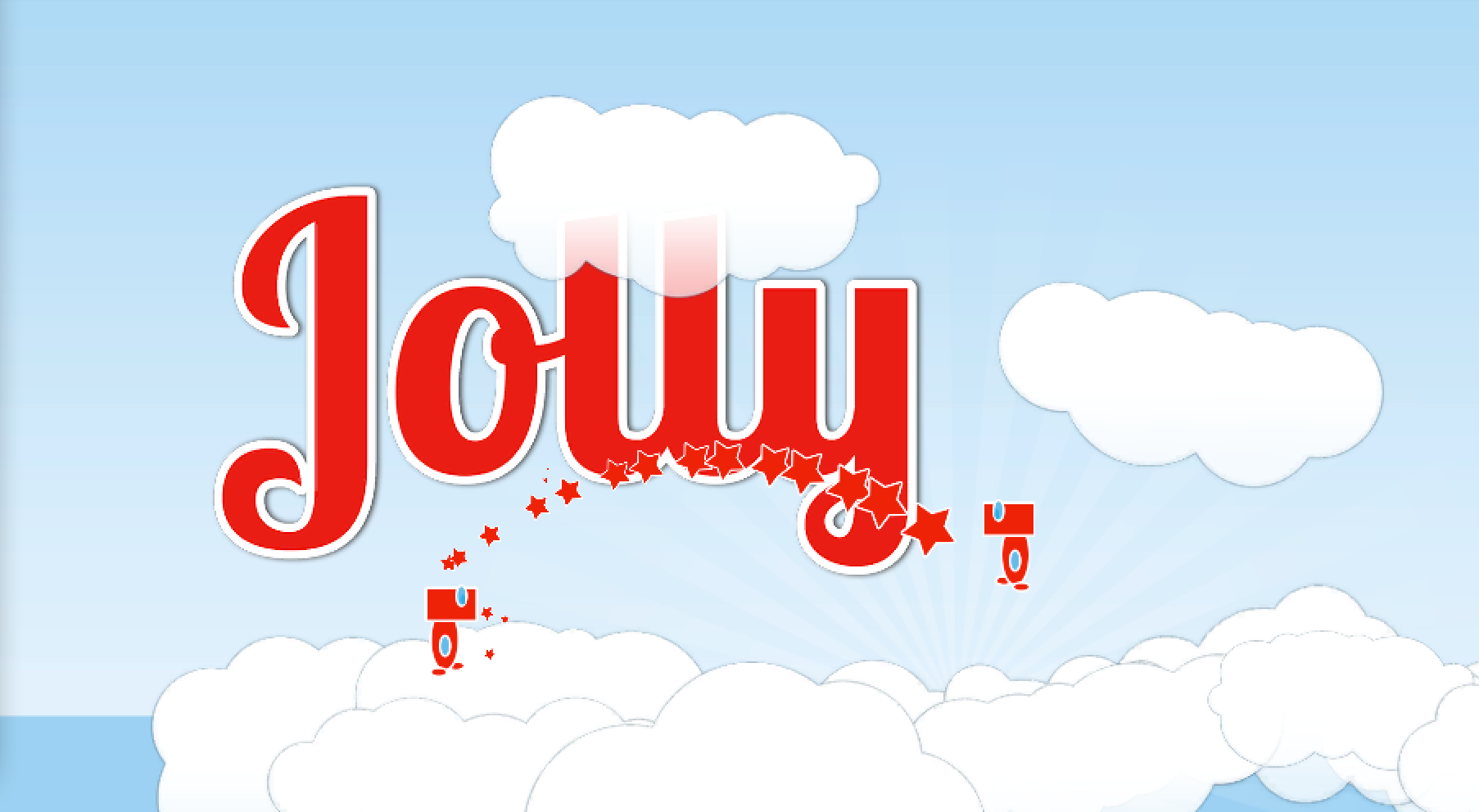JollyPlatformer is a two player plaformer. Players can move, jump, and shoot stars at one another.
Player 1:
- a/d for movement
- w to jump
- s to shoot stars
Player 2:
- left/right keys for movement
- up to jump
- down to shoot stars
Load up the project in the Unity editor and open the Assets/Library/titlescreen.scene and hit play to test the game. Load up the Assets/Library/level1.scene to see the objects that make up the game, specifically paying attention to the Hero objects, their components and their child objects. Look at the Projectile and Hero prefabs, which act as the template for those objects when they need to be created.
titlescreen and level1 are the only two scenes, with the former being the way the game starts.
It functions only to load the first level. There is no way to win or lose the level, but falling
off of the platforms makes the robots no longer controllable.
The game is laid out in a level which contains static sprites for each cloud. Each group of cloud
sprites that create a platform are grouped as children of a single game object. A
PolygonCollider2D is applied to the game object with manually drawn boundaries to give the
players something to stand on.
The players are represented by simple, unanimated sprites with CircleCollider2D and BoxCollider2D
colliders attached. Each has several control scripts and empty GameObject children used for
positioning important features required by those scripts. All this structure is wrapped into the
Hero.prefab file and instantiated for each player in the game.
The Main Camera is automatically controlled such that it pans and zooms to keep both players in
view at all times.
Other components such as the sun, background and logo are self-contained objects with no effect on gameplay.
The Hero component controls the main character's visual representation and movement behavior
through the world. Using commands mapped from a HeroController, it applies forces to the Rigidbody2D
to allow the character to move horizontally, jump or shoot stars.
Two interesting components of the Hero are the ViewportEdgeDetector and the GroundDetector.
Each references an empty child game object of the game object representing the player.
ViewportEdgeDetector determines when the player is about to leave the screen so that Hero
can halt horizontal motion. GroundDetector performs an intersection test with the Ground
layer to learn if the hero is touching the ground, and is therefore allowed to jump.
Each Hero references a HeroController on that object that maps user input to actions. This
abstraction is useful because:
- It allows the controller to be entirely separated from the mechanics of the hero
- Multiple players are distinguished simply by changing the
PlayerNumberfield - In the future, AI could extend a
HeroControllerwithout having to rewrite anything inPlayer
The CameraFollow behavior is attached to the Main Camera to allow it to keep all Hero
characters on screen. It tracks the center point of the heroes horizontally and vertically, and
will zoom out to accommodate characters that get further separated. The main camera is orthogonal
so instead of moving the camera further back on the Z axis (which will have no effect), CameraFollow
adjusts the orthographicSize property of the camera.
This class is designed so that more heroes can be tracked simply by adding members to the
HeroesToFollow array.
The first screen that loads in the game is managed by the TitleScreen. This object renders
a simple textured button using Unity's built-in GUI components.
The cloud objects are created using a single texture that is then broken up into separate objects
using Unity's built in sprite manager. You can see how this is done by clicking on the Sprite Editor
button on the cloud texture.
For documentation on the common components (JollyDebug, Vector3, Vector2) please see
the ../template/ directory.
If you want to have a variable number of heroes in your game, create an instance for each player
and delete heroes that will be unused at the start of the map. Don't forget to also add a check
to classes that reference heroes, such as the CameraFollow, that rebuilds the HeroesToFollow
array with only valid object references.
To support multiple levels, check out the LevelManager class from the JollyTouch sample. If
you want to add collectable items like coins, there is example code in JollyTopdown for you
to use.
Enemies in the game can work very similarly to players. To create an Enemy, you could:
- Duplicate everything about a Hero as an Enemy (prefab,
Hero,HeroController) and reassign references on the prefab to these new classes - Drag the Enemy prefab into the scene
- Change the internals of the
EnemyController(or whatever you called your duplicateHeroController) to return commands to execute based on AI.
Writing the AI is as complicated as you make it. A simple Goomba-like enemy that just moves back and forth is a good place to start.
Unity has built-in support for creating animated 2d graphics. There are two primary methods: keyframe and spritesheet. In the keyframe method, each sprite has many parts (e.g. arms, legs, feet, body, head) that are separated in the source image file and are to be animated individually in Unity. A spritesheet, on the other hand, is like a GIF: each frame of the animation is drawn individually and Unity flips between frames rapidly to display the animation. The spritesheet method is much more art-intensive, but either are supported. To get started, search for "Unity 2D Sprite Animation" and check out some of Unity's documentation videos. Their 2d sidescroller project is also very helpful here.
